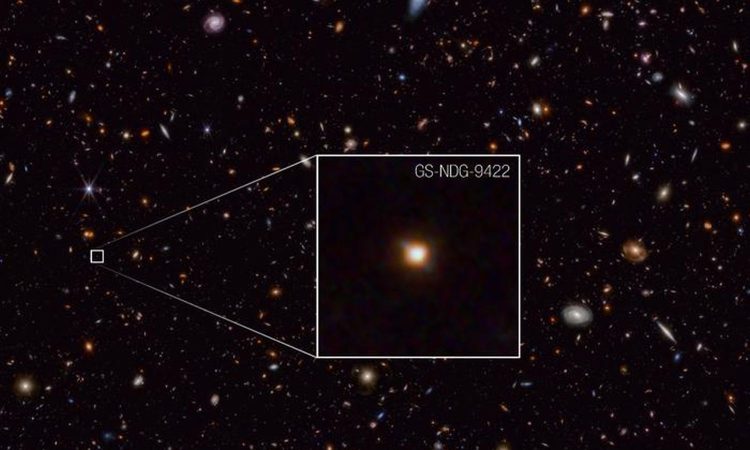
Looking further than ever into the early Universe with NASA’s James Webb Space Telescope, astronomers have discovered something unprecedented: a galaxy with a strange light signature, which they attribute to its gas eclipsing stars.
Discovered about 1 billion years after the Big Bang, the galaxy GS-NDG-9422 (9422) may represent a stage in galactic evolution that represents the missing link between the Universe’s first stars and familiar, well-established galaxies.
“My first thought when I looked at the spectrum of the galaxy was that it’s strange, precisely because of what it reveals: completely new phenomena in the early Universe that will help us understand how the cosmic story began,” said lead researcher Alex Cameron from the University of Oxford, UK.
Cameron contacted colleague Harley Katz, a theorist, to discuss the strange data.
Working together, their team found that computer models of clouds of cosmic gas heated by very hot and massive stars, to the extent that the gas shone brighter than the stars, matched Webb’s observations almost perfectly.
Stars, much hotter and more massive than what we see in the local Universe
“It seems that these stars must be much hotter and more massive than what we see in the local Universe, which makes sense because the early Universe was a very different environment,” said Katz, of Oxford and the University of Chicago .
In the local Universe, typical hot, massive stars have a temperature between 40,000 and 50,000 degrees Celsius. According to the team, galaxy 9422 has stars hotter than 80,000 degrees Celsius.
The research team suspects that the galaxy is in the midst of a brief phase of intense star formation inside a dense gas cloud that is producing a large number of massive, hot stars. The gas cloud is hit by so many photons of light from the stars that it glows extremely brightly.
Besides its novelty, nebular gas eclipsing stars is intriguing because it is something predicted in the first generation, which astronomers classify as population III stars.
What was happening in the Universe in the first billion years after the Big Bang?
“We know this galaxy has no population III stars because the Webb data show too much chemical complexity. However, its stars are different from the ones we are familiar with – the exotic stars in this galaxy could be a guide to understanding how galaxies transitioned from primordial stars to the ones we already know,” said Katz.
Right now, galaxy 9422 is an example of this phase of galaxy development, so there are still many questions to be answered.
Cameron, Katz and their research colleagues are actively identifying more galaxies to add to this population to better understand what was happening in the Universe during the first billion years after the Big Bang.
The work is published in

